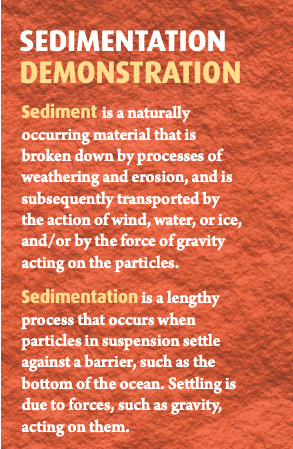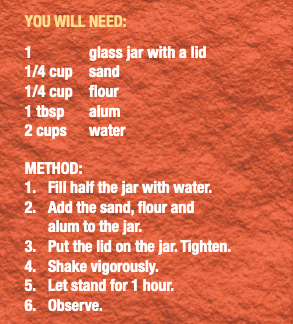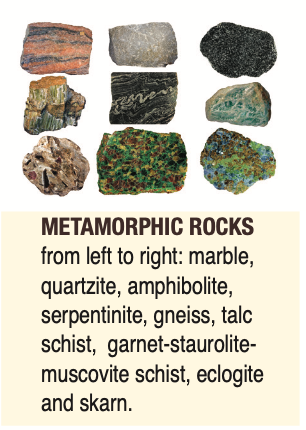
Who doesn’t love rocks? We skip them on water, collect them, use them for kitchen counters and set them in jewelry. Early humans used them as knives and hunting tools. Today, astronauts are mining large space rocks or asteroids. Classification of a rock is determined by its formation and the stage of its cycle. Though it isn’t a life cycle like ours, rocks can grow and change just as we do.
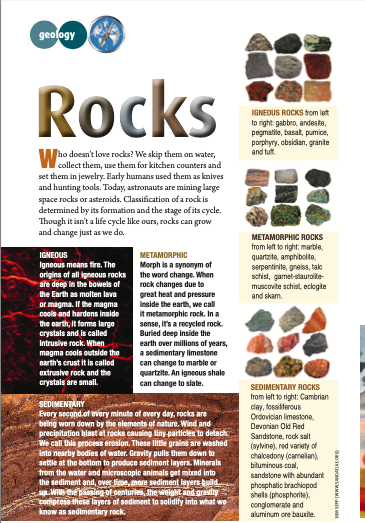
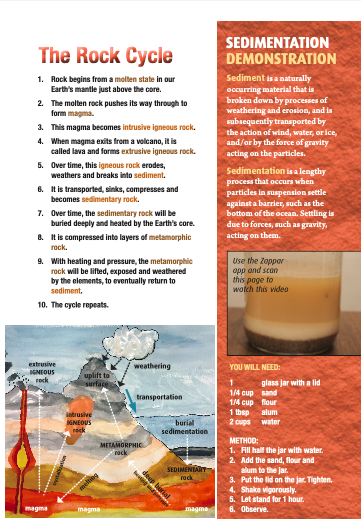
IGNEOUS
Igneous means fire. The origins of all igneous rocks are deep in the bowels of the Earth as molten lava
or magma. If the magma cools and hardens inside the earth, it forms large crystals and is called intrusive rock. When magma cools outside the earth’s crust it is called extrusive rock and the crystals are small.
METAMORPHIC
Morph is a synonym of
the word change. When rock changes due to
great heat and pressure inside the earth, we call
it metamorphic rock. In a sense, it’s a recycled rock. Buried deep inside the earth over millions of years, a sedimentary limestone can change to marble or quartzite. An igneous shale can change to slate.
SEDIMENTARY
Every second of every minute of every day, rocks are
being worn down by the elements of nature. Wind and precipitation blast at rocks causing tiny particles to detach. We call this process erosion. These little grains are washed into nearby bodies of water. Gravity pulls them down to settle at the bottom to produce sediment layers. Minerals from the water and microscopic animals get mixed into
the sediment and, over time, more sediment layers build up. With the passing of centuries, the weight and gravity compress these layers of sediment to solidify into what we know as sedimentary rock.
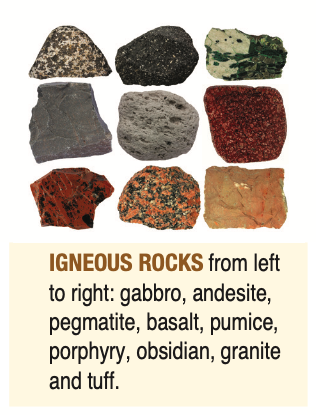


The Rock Cycle
-
Rock begins from a molten state in our Earth’s mantle just above the core.
-
The molten rock pushes its way through to form magma.
-
This magma becomes intrusive igneous rock.
-
When magma exits from a volcano, it is called lava and forms extrusive igneous rock.
-
Over time, this igneous rock erodes, weathers and breaks into sediment.
-
It is transported, sinks, compresses and becomes sedimentary rock.
-
Over time, the sedimentary rock will be buried deeply and heated by the Earth’s core.
-
It is compressed into layers of metamorphic rock.
-
With heating and pressure, the metamorphic rock will be lifted, exposed and weathered by the elements, to eventually return to sediment.
10. The cycle repeats.

Use the Zappar app to scan the image below for a video demonstration!
